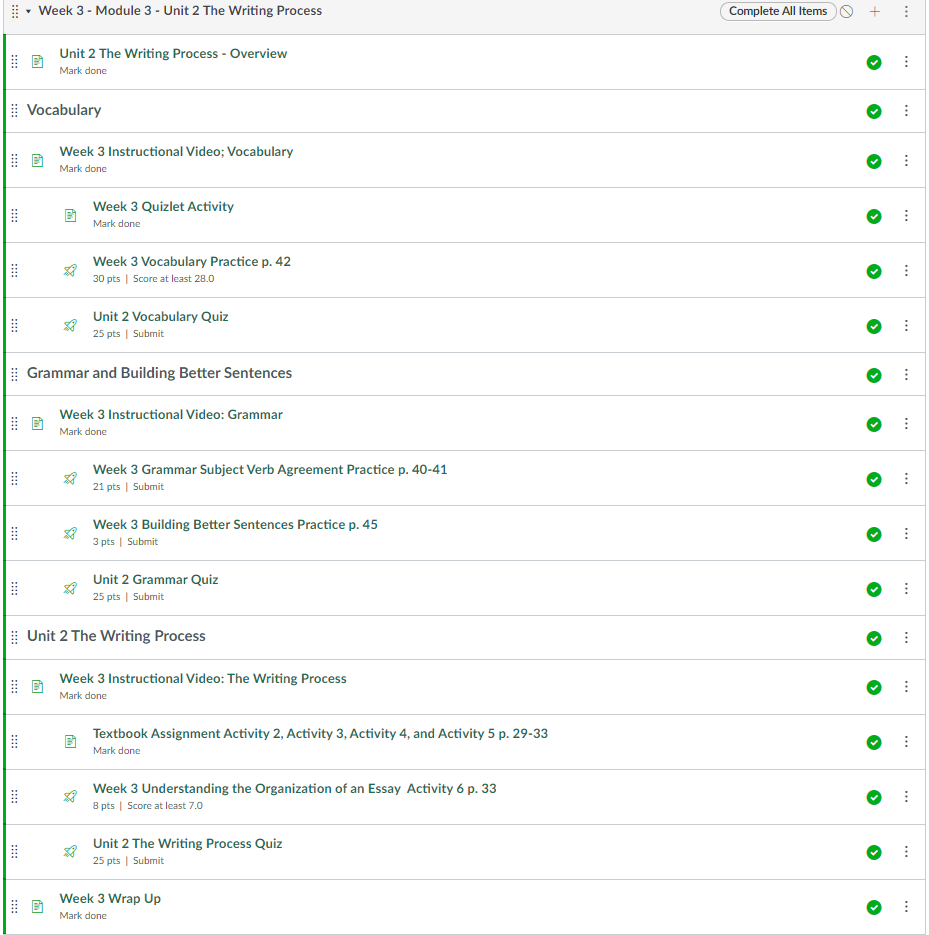Chunking refers to breaking information into small, logical segments to make it easier to process and remember. According to cognitive science research, working memory has a limited capacity and can only hold a certain amount of information at one time. Exceeding the limits of working memory makes it more difficult for learners to absorb information.
When applying the concept of chunking to online course design, a common approach is to break down the course content into weekly modules, then chunk the content of each module into logical and sequential segments to meet the instructional needs of students. Think about what knowledge your students need to know and what skills they need to gain after they complete the module. Make sure you only provide information students need and don’t overload them. This lean approach to course design reduces cognitive load and enhances retention.
To organize the segments, use clear headings to help students see the organization and sequencing. Text headers can be added to a Canvas module to visually separate sections. In general, each section of the module contains the following components: learning materials, learning activities, and formal or informal assessments that align with the specific topic(s) and objectives for that section. If you plan to create your own lecture videos, read our Chunking Course Content article for tips on chunking lectures. Assessments are used to determine if a student has met the learning outcomes while learning activities provide students opportunities to reflect and practice the concepts and skills they have learned before attempting the assessment.
Below is an example of a module that has been chunked into smaller sections. The module content in this example has been divided into three sections: vocabulary, grammar and building better sentences, and the writing process. Text headers are used to separate these three sections and show the section topics. The vocabulary and grammar knowledge sections help students build foundations for learning the writing process, so it is logical to place them before the writing process section. Each section includes learning materials (such as instructional videos), followed by a list of practice activities related to the topic. After students complete these practice activities, they submit a quiz at the end of each section.
If you would like to work with an instructional designer in eLearning to discuss how you can chunk your course modules, please submit an Instructional Design Request form.

References
Shank, P. (2018). What research tells us about chunking content. eLearning Industry
The Center for Teaching Learning (n.d.), Chunking and pacing in online courses. The University of North Carolina at Charlotte
Malamed, C. (n.d.), Chunking information for instructional design. The eLearning Coach
Smith, B., & Brame, C. (2014). Blended and online learning. Vanderbilt University Center for Teaching
Thalmann, M., Souza, A. S., & Oberauer, K. (2019). How does chunking help working memory? Journal of Experimental Psychology: Learning, Memory, and Cognition, 45(1), 37–55.
Graf, D. (2004). Do you chunk? You should. Distance Learning, 1(3), 39–40.